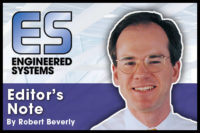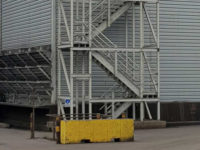New Year, new opportunities. There are so many challenges going on in the world, and some of those are facing the HVAC industry. The latest “hot topic” is decarbonization and electrification (refer back to my February and August 2023 columns). Before these two terms appeared last year, there were net zero carbon and carbon neutral quests. But, can we check these two off as completed and move on to the new hot topics? Not really!
Net zero and carbon neutral remain to be achieved on all new projects, especially renovation projects. Years earlier, we had energy retrofit projects with financial funding through a variety of state, federal, and utility company grants. These two topics, as well as the new hot topics are going to need the same kind of financial incentives because not all institutions, business, etc., can afford to achieve these goals. And, the order of priority to complete is as follows.
- Achieving carbon neutrality for existing buildings — building owners need to work with designers who are proficient in carbon neutral designs to balance out the carbon dioxide produced on-site to the amount of carbon dioxide absorbed into the atmosphere.
- Ensure all new builds and renovations are net zero — net zero carbon, as well as the other greenhouse gases (GHG), can’t simply apply to a select few institutions. Even the speculative commercial office buildings and other building applications must be funded to accommodate this net zero carbon goal.
While these two retrofit and new construction programs need to happen to reduce global warming, the producers of electricity and our government can create a directive to begin the process of decarbonization and begin to grow the electrical infrastructure to serve all buildings and residential applications.
So, those in the HVAC building industry need to get onboard with the initiatives noted above by educating themselves to provide creative solutions. Up until now, the average HVAC design engineer, myself included, really hasn’t had the expertise to lead this challenge. In the past, it has been the equipment manufacturer who brings the latest in HVAC technology to the design community. Why is that? Equipment manufacturers invest a certain percentage of their annual profits to research and development — they know they must constantly stay ahead of their competition to maintain a profit and grow their businesses. Quite often, equipment is purchased on best value and/or best performance because of the manufacturer’s innovative solution(s). Their manufacturer representatives bring these products to the market through their customers, the design community.
As a rule, the design community, and more specifically the design consulting firms, don’t budget annual funds for research and development of their professional staff. Organizations, such as ASHRAE, invest in research and development and make the results available to their members (many of which are active consultants). Unfortunately, this society doesn’t bring their research report results to the design community like the manufacturer representatives calling on their customers on a regular basis. So, I’d say it is safe to say most design engineers are not familiar with ASHRAE’s findings because it requires a self-educating effort to collect this data, and it’s much easier to receive the “latest information” from manufacturer representatives. Plus, the designers may get a free lunch in the process of learning.
So, there are two weak links in achieving net zero carbon and carbon neutral buildings. They are:
- Having the financial incentive and funds to achieve these two goals.
- Have the engineering community standardize on net zero carbon and carbon neutral building designs based on their knowledge and commitment to do the right thing.
While these initiatives transition from alternate design options to becoming standard design intent procedures, the utility companies and the government can be preparing a timeline to implement decarbonization mandates and electrification solutions beginning at the utility power plants and the distribution network delivery system to each building all the way to the HVAC terminal units.




